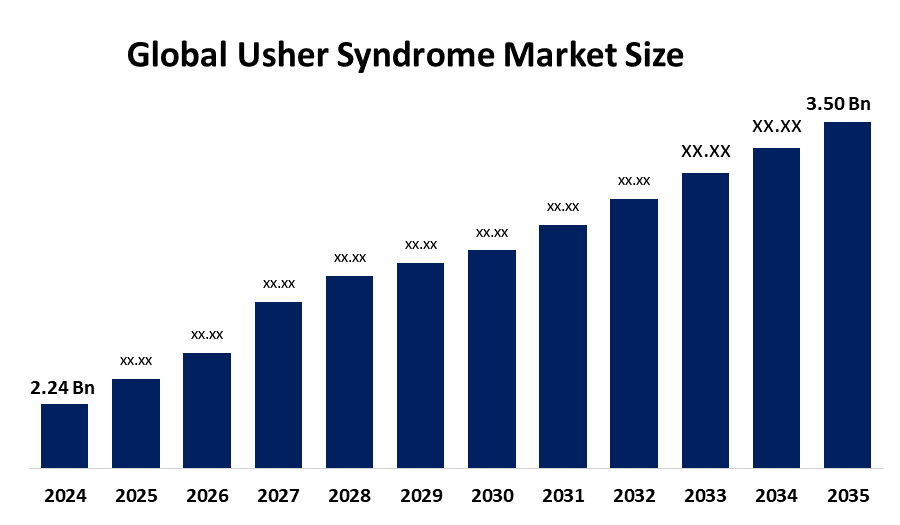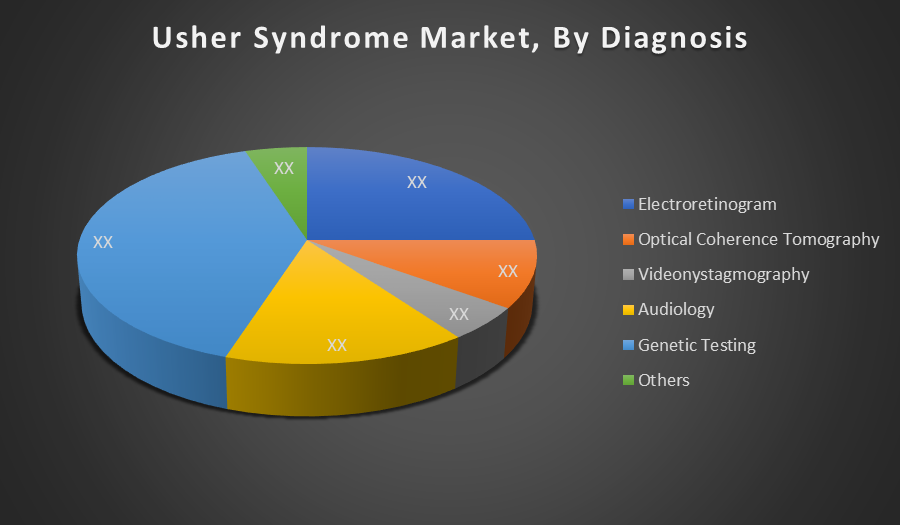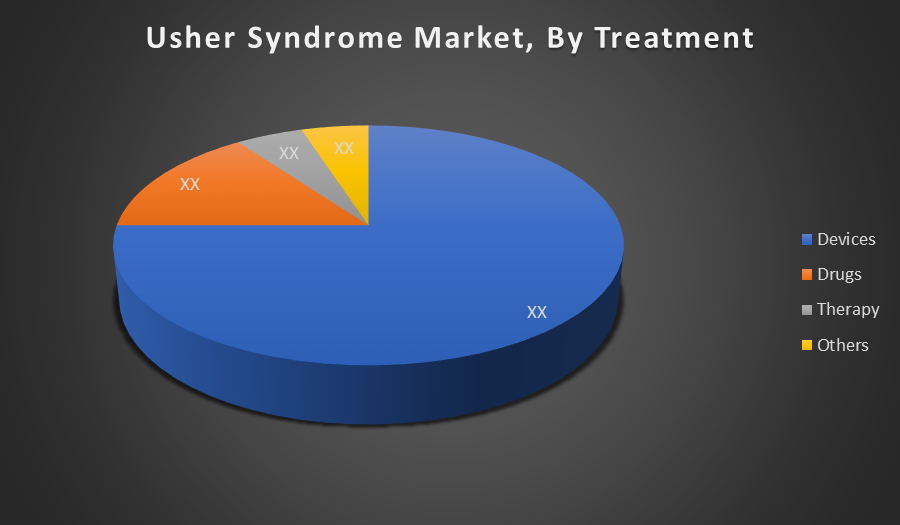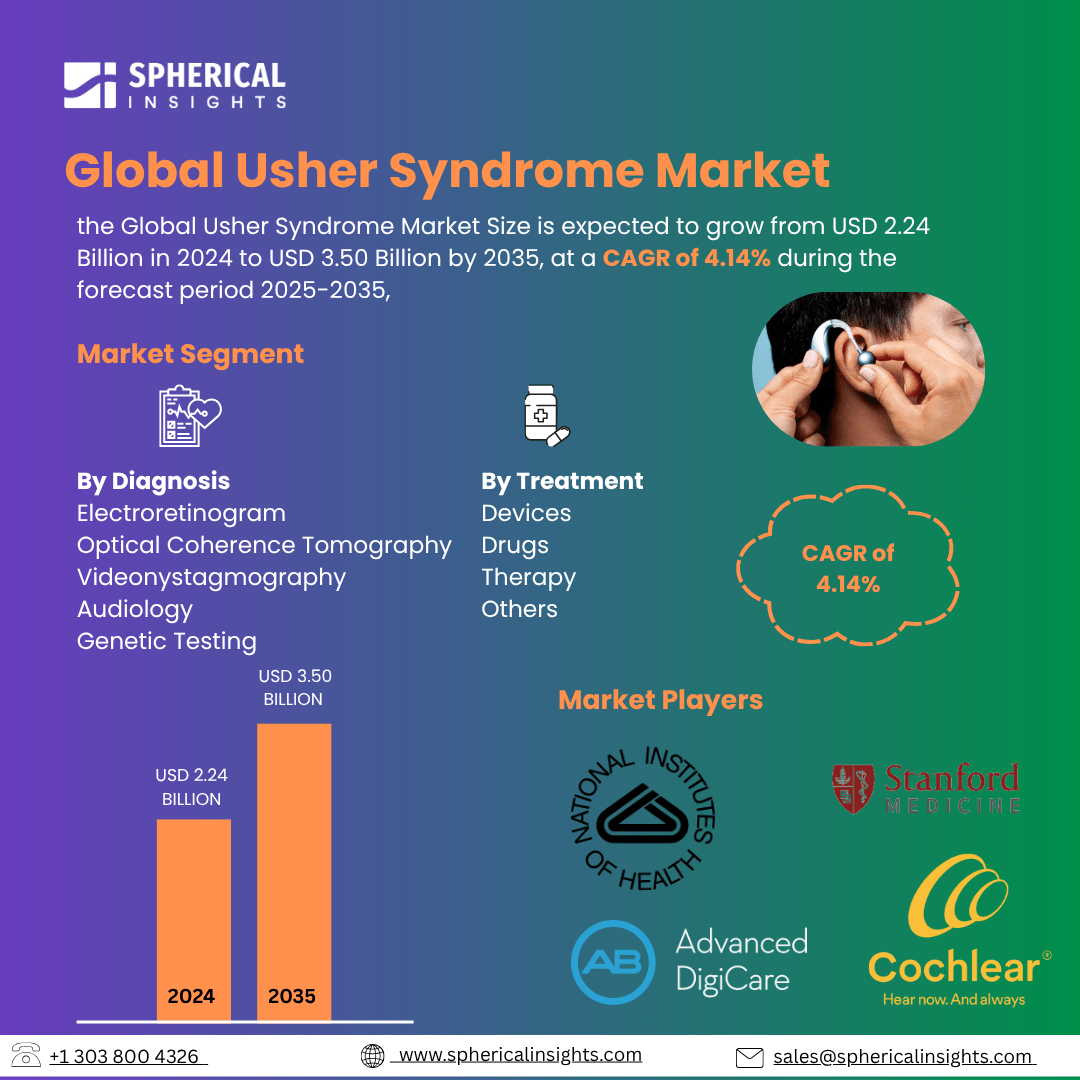- As per Spherical Insights & Consulting, The Global Usher Syndrome Market Size is expected to Grow from USD 2.24 Billion in 2024 to USD 3.50 Billion by 2035, at a CAGR of 4.14% during the forecast period 2025-2035, owing to the launch of new therapies in the market and the rise in the number of cases.
- The leading Usher Syndrome Market Companies such as Sepul Bio, Stanford Health Care, Cochlear Ltd, Advanced Bionics AG, Spark Therapeutics, Editas Medicine Inc, ProQR Therapeutics NV, Odylia Therapeutics, Eli Lilly and Company, Atsena Therapeutics, Clearside Biomedical Inc, Aavantgarde Bio, Laboratories Théa, Nacuity Pharmaceuticals, MeiraGTx, and Others.

Usher Syndrome Treatment Market: Understanding and Treatment Algorithm:
Usher Syndrome is a rare genetic disorder characterized by a combination of hearing loss and progressive vision loss due to retinitis pigmentosa. It is inherited in an autosomal recessive pattern and often affects balance. Usher syndrome is the leading cause of deaf-blindness and is categorized into three clinical types.
Usher Syndrome Diagnosis:
Usher Syndrome is diagnosed through a combination of hearing tests, vision exams, balance assessments, and genetic testing. Audiometry identifies hearing loss, while electroretinography and retinal imaging detect retinitis pigmentosa. Genetic testing confirms mutations in specific genes. Early diagnosis is crucial for intervention, management, and participation in clinical trials.
Usher Syndrome Treatment
Treatment focuses on managing symptoms since no cure exists. Hearing loss is addressed with hearing aids or cochlear implants. Vision loss management includes low-vision aids and mobility training. Physical therapy helps balance issues. Research into gene and RNA therapies offers hope for future targeted treatments.
Usher Syndrome Epidemiology
The disease epidemiology covered in the report provides historical as well as forecasted epidemiology segmented by Total Diagnosed Incident Population of Usher Syndrome, Gender-specific Diagnosed Incidence of Usher Syndrome, Type-specific Diagnosed Incidence of Usher Syndrome, Age-specific Diagnosed Incidence of Usher Syndrome, Diagnosed Incident Population based on Primary Site of Usher Syndrome, and Diagnosed Incident Population based on Histologic Classification of Usher Syndrome Tumour in the global market covering North America, Europe, Asia-Pacific, Latin America, the Middle East, and Africa from 2024 to 2035.
Principal Insights
This section offers a global overview of usher syndrome epidemiology in major markets worldwide.
Country Wise- Usher Syndrome Multiforme Epidemiology
- The epidemiology segment provides Usher Syndrome prevalence data and findings across key regions worldwide, including North America, Europe (Germany, France, Italy, Spain, and the United Kingdom), Asia-Pacific (including Japan), Latin America, the Middle East, and Africa.
Usher Syndrome Recent Developments:
- In December 2024, Sepul Bio, a business unit of Laboratoires Théa focused on RNA therapies for inherited retinal diseases, launched a Phase 2b clinical trial for ultevursen, an RNA therapy targeting USH2A-related retinitis pigmentosa and Usher syndrome. The first patient was dosed at the Retina Foundation of the Southwest in Dallas.
Usher Syndrome Marketed Drugs:
Ultevursen is an RNA-based antisense oligonucleotide therapy targeting exon 13 mutations of the USH2A gene. It aims to slow vision loss in patients with Usher Syndrome type 2A and related retinitis pigmentosa. It is currently in Phase 2b clinical trials.
Sepofarsen is an RNA-based therapy designed to treat Leber congenital amaurosis type 10 (LCA10) by targeting CEP290 gene mutations. It uses exon-skipping technology to restore retinal function and has completed early-phase clinical trials.
- QR-421a: ProQR Therapeutics
QR-421a is an antisense oligonucleotide designed to treat Usher Syndrome type 2 and non-syndromic retinitis pigmentosa caused by mutations in exon 13 of USH2A. It is currently in clinical development phases.
Usher Syndrome: Emerging Therapies
- QR-421a: It is an antisense oligonucleotide in clinical trials for Usher Syndrome type 2 and related retinitis pigmentosa. It targets exon 13 of the USH2A gene to promote correct protein production and slow vision loss.
- Ultevursen: It is an RNA-based therapy in late-stage trials aimed at treating Usher Syndrome type 2A by skipping mutated exon 13 in the USH2A gene, improving retinal cell function and preserving vision.
- LUCE-1: It is a dual-AAV gene therapy candidate in early clinical development for USH1B. It delivers functional MYO7A gene copies to retinal cells, aiming to restore vision in patients with Usher Syndrome type 1 B.
- Sepofarsen: It is an RNA-based exon-skipping therapy targeting CEP290 mutations in Leber congenital amaurosis and potentially applicable to Usher Syndrome-related retinal dystrophies, under early-stage clinical investigation.
Usher Syndrome Market Outlook
- The Usher Syndrome market refers to the global industry involved in the development, production, and commercialization of therapies, diagnostics, and supportive care products aimed at managing and treating Usher Syndrome, a genetic disorder causing combined hearing loss and progressive vision impairment.
- Key drivers of the usher syndrome market include increasing prevalence of genetic hearing and vision disorders, advancements in gene and RNA-based therapies, growing awareness and early diagnosis, supportive government funding for rare diseases, and rising investment in research and development for innovative treatment options.
- Significant opportunities lie in the development of new targeted biologics, combination immunotherapies, and precision medicine approaches. The focus on under-researched tumor types like HRAS-mutant cancers, the application of artificial intelligence in diagnostics, and increasing access to care in emerging markets also creates strong potential for market growth.
- Governments worldwide support usher syndrome through rare disease funding, newborn screening programs, clinical trial facilitation, and public-private partnerships to improve diagnosis, treatment access, and awareness.
- Limited treatment options and complex genetic variations pose significant challenges to the usher syndrome market growth.
- The usher syndrome market is projected to grow significantly due to advances in gene therapies and increased genetic screening.
Usher Syndrome Market Segmentation
By Diagnosis:
- Electroretinogram
- Optical Coherence Tomography
- Videonystagmography
- Audiology
- Genetic Testing
- Others

Genetic Testing holds the largest share in the usher syndrome diagnosis segment due to its ability to accurately identify specific gene mutations responsible for the disorder. This enables early diagnosis, personalized treatment plans, and better patient management, driving widespread adoption in clinical practice.
By Treatment:
- Devices
- Drugs
- Therapy
- Others

The Devices segment holds the largest share in usher syndrome treatment due to the widespread use of hearing aids and cochlear implants, which effectively manage hearing loss. These devices improve patient quality of life, are readily available, and represent the primary treatment option currently.
Regional Segment Analysis of the Usher Syndrome Market
North America, particularly the United States, dominates the global usher syndrome market due to several critical factors. The region has a high prevalence of diagnosed cases thanks to widespread genetic screening and early diagnosis programs. The presence of leading pharmaceutical and biotech firms like ProQR, Spark Therapeutics, and Sepul Bio supports ongoing clinical development of novel RNA and gene therapies. Additionally, strong research funding, favorable regulatory frameworks (like orphan drug incentives from the FDA), and a growing focus on rare diseases contribute to market leadership. The U.S. also benefits from active patient advocacy organizations, such as the Usher Syndrome Coalition, which play a key role in trial recruitment and awareness efforts.
Asia-Pacific is emerging as the fastest-growing market for usher syndrome due to improvements in healthcare infrastructure, genetic testing capabilities, and government-backed rare disease programs. Countries like China, Japan, South Korea, and India are increasing investments in precision medicine and genomics. There is also a rising demand for advanced diagnostic tools such as optical coherence tomography (OCT) and next-generation sequencing (NGS). Partnerships between global pharma firms and local research institutions are expanding clinical trials in the region.
Usher Syndrome Market Key Companies
- National Institute of Health
- Stanford Health Care
- Cochlear Ltd
- Advanced Bionics AG
- Spark Therapeutics
- Editas Medicine Inc
- ProQR Therapeutics NV
- Odylia Therapeutics
- Eli Lilly and Company
- Atsena Therapeutics
- Clearside Biomedical Inc
- Aavantgarde Bio
- Laboratories Théa
- Nacuity Pharmaceuticals
- MeiraGTx
- Others
Usher Syndrome Therapeutics Market Report Scope
- The Usher Syndrome therapeutics market report provides a detailed overview, covering its causes, symptoms, disease progression, and existing treatment options.
- Detailed insights into Usher Syndrome’s epidemiology and therapeutic approaches are included.
- Additionally, a comprehensive review of existing and emerging Usher Syndrome therapies is provided, including an evaluation of new treatments expected to influence the current Usher Syndrome treatment market landscape.
- The report includes a detailed review of the Usher Syndrome therapeutics market, both historical and forecasted, highlighting the global drug reach.
- The Patient-Based Usher Syndrome Market Forecasting report offers valuable insights into trends shaping the global Usher Syndrome market, helping to develop effective business strategies.
Usher Syndrome Treatment Market Report Insights
- Forecasting Market Trends Based on Patient Data and Disease Rates
- Usher Syndrome Therapeutic Approaches in Usher Syndrome
- Review Of Drugs in Development for Usher Syndrome
- Market, Growth, and Trends in Usher Syndrome
- Market Opportunities in Usher Syndrome Treatment
- Effects Of Future Therapies on Usher Syndrome Treatment.
Usher Syndrome Treatment Market Report Key Strengths
- 15 Years Usher Syndrome Market Forecast
- Global Coverage
- Usher Syndrome Epidemiology Segmentation
- Key Cross Competition
Usher Syndrome Treatment Market Report Assessment
- Present Practices in the Usher Syndrome Treatment Market
- Review of Investigational Usher Syndrome Drugs
- Attractiveness of the Usher Syndrome Drug Market
- Usher Syndrome Market Drivers
- Usher Syndrome Market Barriers
- SWOT
- Attribute Analysis
Market Segment
This study forecasts revenue at the global, regional, and country levels from 2020 to 2035. Spherical Insights has segmented the usher syndrome market based on the below-mentioned segments:
Global Usher Syndrome Market, By Diagnosis
- Electroretinogram
- Optical Coherence Tomography
- Videonystagmography
- Audiology
- Genetic Testing
- Others
Global Usher Syndrome Market, By Treatment
- Devices
- Drugs
- Therapy
- Others
Global Usher Syndrome Market, By Regional Analysis
- North America
- Europe
- Germany
- UK
- France
- Italy
- Spain
- Russia
- Rest of Europe
- Asia Pacific
- China
- Japan
- India
- South Korea
- Australia
- Rest of Asia Pacific
- South America
- Brazil
- Argentina
- Rest of South America
- Middle East & Africa
- UAE
- Saudi Arabia
- Qatar
- South Africa
- Rest of the Middle East & Africa






